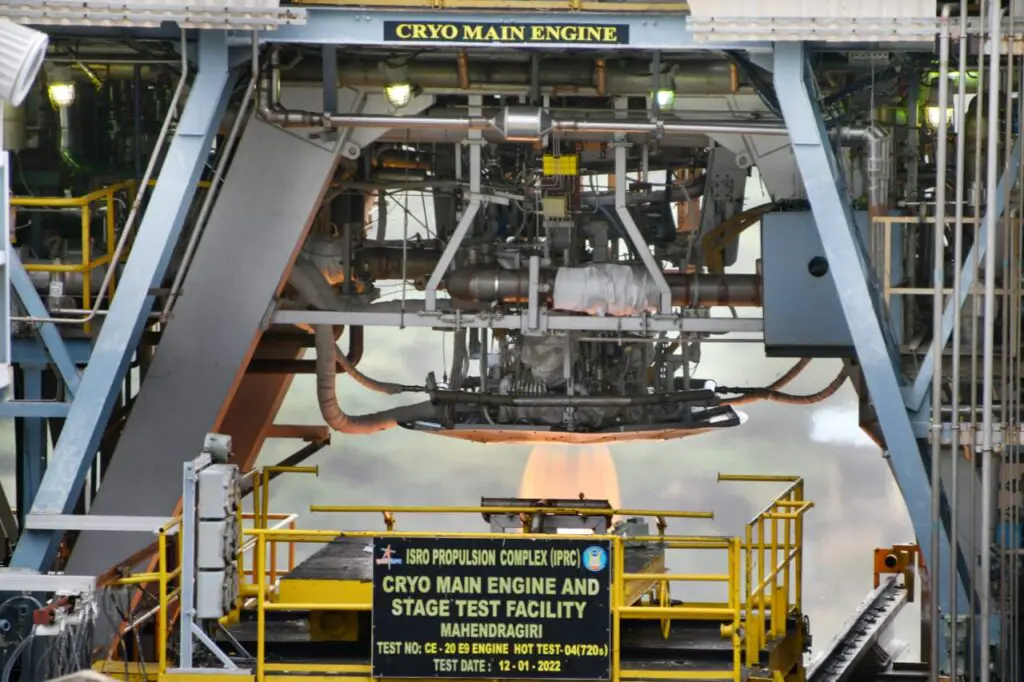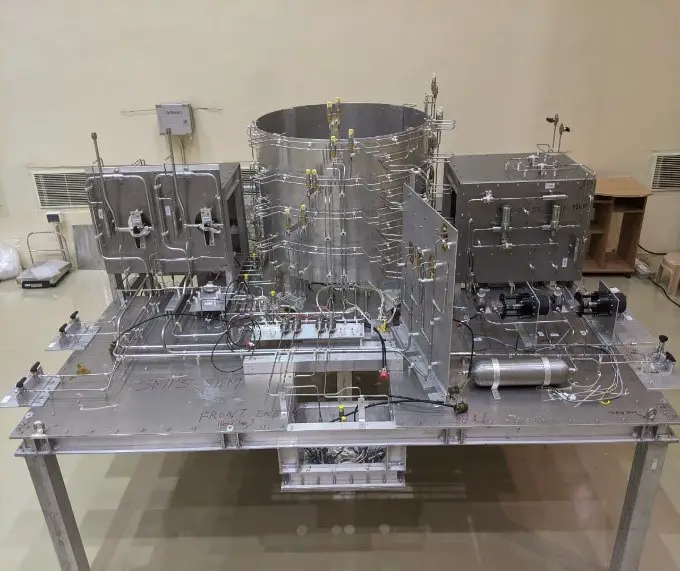Indian Space Research Organization (ISRO) received a boost in the arm after it successfully conducted a qualification test of Cryogenic Engine for Gaganyaan programme on Thursday at ISRO Propulsion Complex (IPRC), Mahendragiri, Tamil Nadu.
The engine test was conducted for a duration of 720 seconds and the space agency said the engine performance met the test objectives. The engine parameters were close to the predicted pattern during the entire duration of the test.
“This successful long-duration test is a major milestone for the Human Space Programme – Gaganyaan. It ensures the reliability and robustness of the cryogenic engine for induction into the human-rated launch vehicle for Gaganyaan.,” wrote ISRO on its website.

The engine will be tested four more times for a cumulative duration of 1810 seconds. later, one more engine will be tested for two short-duration tests & one long-duration test. These tests will complete the cryogenic engine qualification for Gaganyaan Programme.
Last year, ISRO had conducted the third long duration hot test of the liquid propellant Vikas Engine meant for the core L110 liquid stage of the human rated GSLV MkIII vehicle. These tests are a part of the engine qualification requirements for the Gaganyaan Programme.
Gaganyaan Mission Specific Crew Training
In December 2021, ISRO had announced the commencement of Gaganyaan Mission Specific Crew Training based on a Crew Training Curriculum developed by an inter-agency task team consisting of members from the Defence Research and Development Organisation(DRDO), the Indian Air Force (IAF) and ISRO. Wg Cdr (Retd.) Rakesh Sharma and Air Cmde (Retd.) Ravish Malhotra were also part Apex Committee comprising of senior officials. Both these officers had attended training for cosmonauts at the YURI GAGARIN CENTER in USSR for 18 months and later Wg Cdr (Retd.) Rakesh Sharma became the first Indian in space.
The course, a three-semester training curriculum, will have modules on Human Rated Launch Vehicle, Space Medicine, Orbital Module systems, Microgravity Familiarization, Launch Complex Procedures, Recovery Operations, Human Rating & Certification, Survival Training and other similar subjects.
The training is geared to teach the candidates the Crew Safety in Gaganyaan mission. Upon finishing the course, the crew would be familiar with the operating environment, warning systems, risks, nominal and off-nominal situations procedures and emergency escape systems of Gaganyaan.
The crew will be trained by Modern training methods like Virtual reality simulators, health monitoring equipment and Static Mock-up simulators. The faculty is drawn from the Indian Institute of Science, Institute of Aviation Medicine, DRDO and ISRO.
Gaganyaan Service Module Propulsion System
Last year, the first hot test of the ‘System Demonstration Model (SDM)’ was held for the Gaganyaan Service Module Propulsion System for a duration of 450 seconds.
This Service Module as part of the Gaganyaan Orbital module is located below the crew module. It will remain connected to it until the re-entry of Gaganyaan. The Module Propulsion System includes a unified bipropellant system with five 440 N thrust engines and sixteen 100 N Reaction Control system (RCS) thrusters with MON-3 and MMH as Oxidizer and Fuel respectively.
The System Demonstration Model (SDM) which was tested included five 440 N engines and eight 100 N thrusters. A new test facility has been set up at IPRC, Mahendragiri for testing the SDM.
Gaganyaan programme
In August 2018, India officially decided to send its first national space crew into orbit by August 2022. The name of the project is “Gaganyan” (from the Sanskrit “Gagan” – heaven), that is, “Heavenly Ship”. Initially, it was planned that three crew members would spend five to seven days in orbit, and before that, two unmanned launches of the Gaganyaan would be carried out to test the equipment. Onboard these ships are specially designed robots to test life support systems.

India’s first manned spacecraft, Gaganyan, could possibly go into space in 2023. ISRO plans to make the planned two test launches of unmanned spacecraft into Earth orbit in 2022.
Russia and France have been engaged in helping out with the mission.
The French National Center for Space Research of France (CNES), will provide the equipment developed and tested by it, which is still used onboard the International Space Station (ISS), for use by the crews of the future Indian mission.
CNES will also provide French-made bags made of refractory materials that serve to protect the equipment from shock and radiation.
The Indian flight doctors and mission control specialists will be trained at CADMOS (Microgravity Development Assistance Center for Space Operations). Training is also planned at the European Astronaut Training Center in Cologne (Germany).
Russia has already trained the Indian crew at the Gagarin Cosmonaut Training Center in Russia.
Other than training, the Russians are supplying parts to the Gaganyaan crew module.
Also read: ISRO tests High-Powered Rocket Engine for India’s manned space mission
